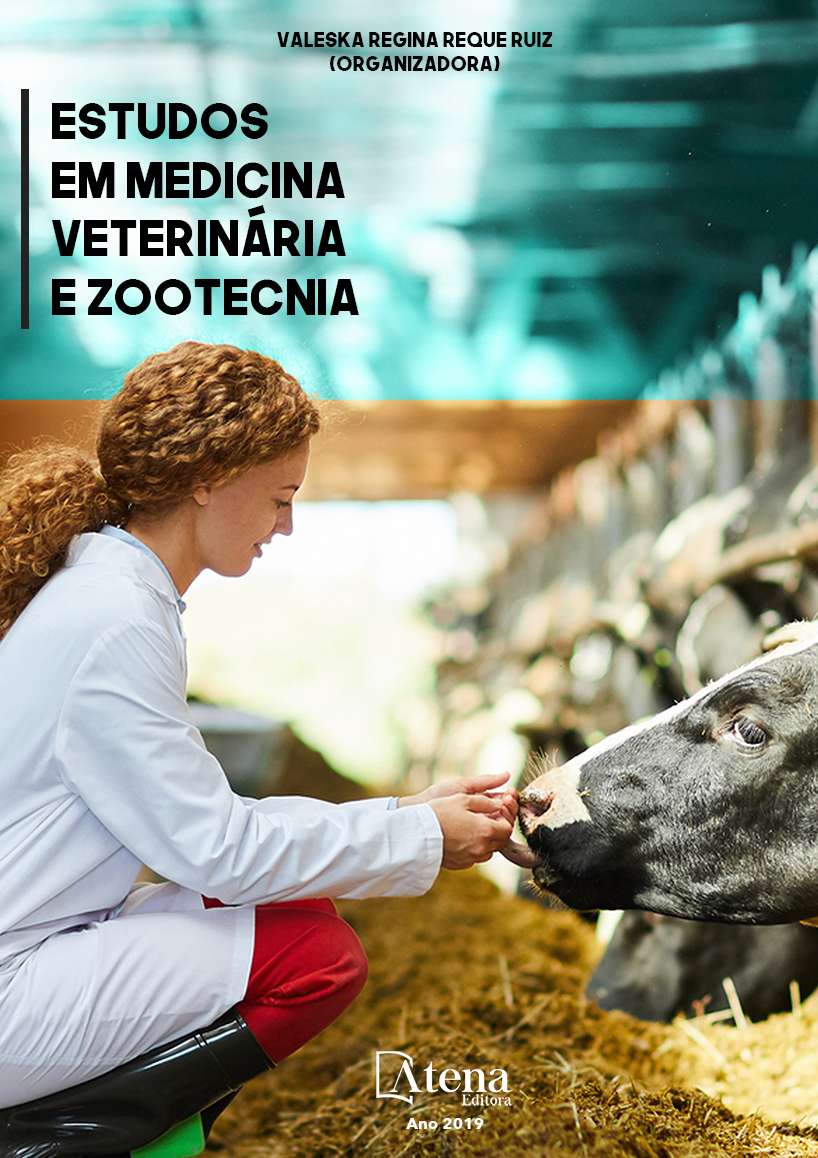
MALFORMAÇÃO CONGÊNITA EM CÃES (Canis lupus familiaris )
Qualquer alteração no decorrer do
desenvolvimento embrionário pode resultar em
anomalias congênitas que podem variar desde
pequenas assimetrias até defeitos com maiores
comprometimentos estéticos e funcionais. Desta
forma malformação congênita pode ser definida
como toda a anomalia funcional ou estrutural,
presente no momento do nascimento ou que se
manifesta em etapas mais avançada da vida. As
causas estão ligadas a eventos que precedem
ao nascimento, podendo ser herdada ou
adquirida. O objetivo deste trabalho é descrever
as malformações congênita identificadas em
11 cães, sendo 9 natimortos e 2 neonatos,
submetidos à eutanásia. Dentre os espécimes,
foi possível identificar animais oriundos de raças
mesaticefálicas e braquicefálica. Nos animais
avaliados foi possível identificar as seguintes
malformações: Lábio leporino, fenda palatina,
encefalocele, anencefalia, hidrocefalia, ansarca,
macroglossia, hipotricose, atresia genital,
onfalocele, glaucoma congênico, extrofia
vesical, comprometimento ósseo (incisivo),
fimose e atresia anal. As malformações
congênitas podem ser compatíveis e
incompatíveis com a vida, podem ter causas
conhecidas ou desconhecidas. A malformação
de maior ocorrência foi a fenda palatina,
atingindo 55% dos animais. Em seguida se
observou a presença de lábio leporino e atresia
genital, estando ambas presentes em 27%
dos casos avaliados. É importante ressaltar
que neonatos e natimortos descartados por
motivo de malformações podem ser um valioso
material de estudos, considerando que na
medicina veterinária este assunto ainda é pouco explorado, pois quando a morte não ocorre imediatamente após o nascimento,
dificilmente os animais são submetidos à avaliação médico veterinária no período
neonatal (primeira e segunda semanas de vida)
MALFORMAÇÃO CONGÊNITA EM CÃES (Canis lupus familiaris )
-
DOI: 10.22533/at.ed.53819240510
-
Palavras-chave: Neonatos, alterações congênitas, animais de companhia.
-
Keywords: Newborn, congenital abnormalities, company animals.
-
Abstract:
Any change in the course of embryonic development may result in
congenital anomalies that may range from small asymmetries to defects with greater
aesthetic and functional impairments. In this way congenital malformation can be
defined as any functional or structural anomaly, present at the moment of birth or that
manifests itself in later stages of life. The causes are linked to events that precede birth,
and can be inherited or acquired. The objective of this work is to describe the congenital
malformations identified in 11 dogs, 9 stillborn and 2 neonates, submitted to euthanasia.
Among the specimens, it was possible to identify animals from the tabletexphalic and
brachycephalic races. In the animals evaluated, it was possible to identify the following
malformations: Cleft lip, cleft palate, encephalocele, anencephaly, hydrocephalus,
macrocephaly, macroglossia, hypotrichosis, genital atresia, omphalocele, congenital
glaucoma, bladder exstrophy, bone involvement (incisor), phimosis and anal atresia.
Congenital malformations may be compatible and incompatible with life, may have
known or unknown causes. The most frequent malformation was the cleft palate,
reaching 55% of the animals. Then the presence of cleft lip and genital atresia were
observed, both of which were present in 27% of the cases evaluated. It is important
to emphasize that neonates and stillbirths discarded due to malformations can be a
valuable study material, considering that in veterinary medicine this subject is still little
explored, because when death does not occur immediately after birth, it is difficult to
evaluate the animals veterinarian in the neonatal period (first and second weeks of life
-
Número de páginas: 15
- CAROLINA GOMES ARAUJO DE SOUSA
- KAMILA STELLET RANGEL
- THAMIRES SOUZA MANHÃES
- LUCIANA DA SILVA LEMOS
- ANA BARBARA FREITAS RODRIGUES GODINHO
- IASMIN FLOR LOURENÇO GONÇALVES


